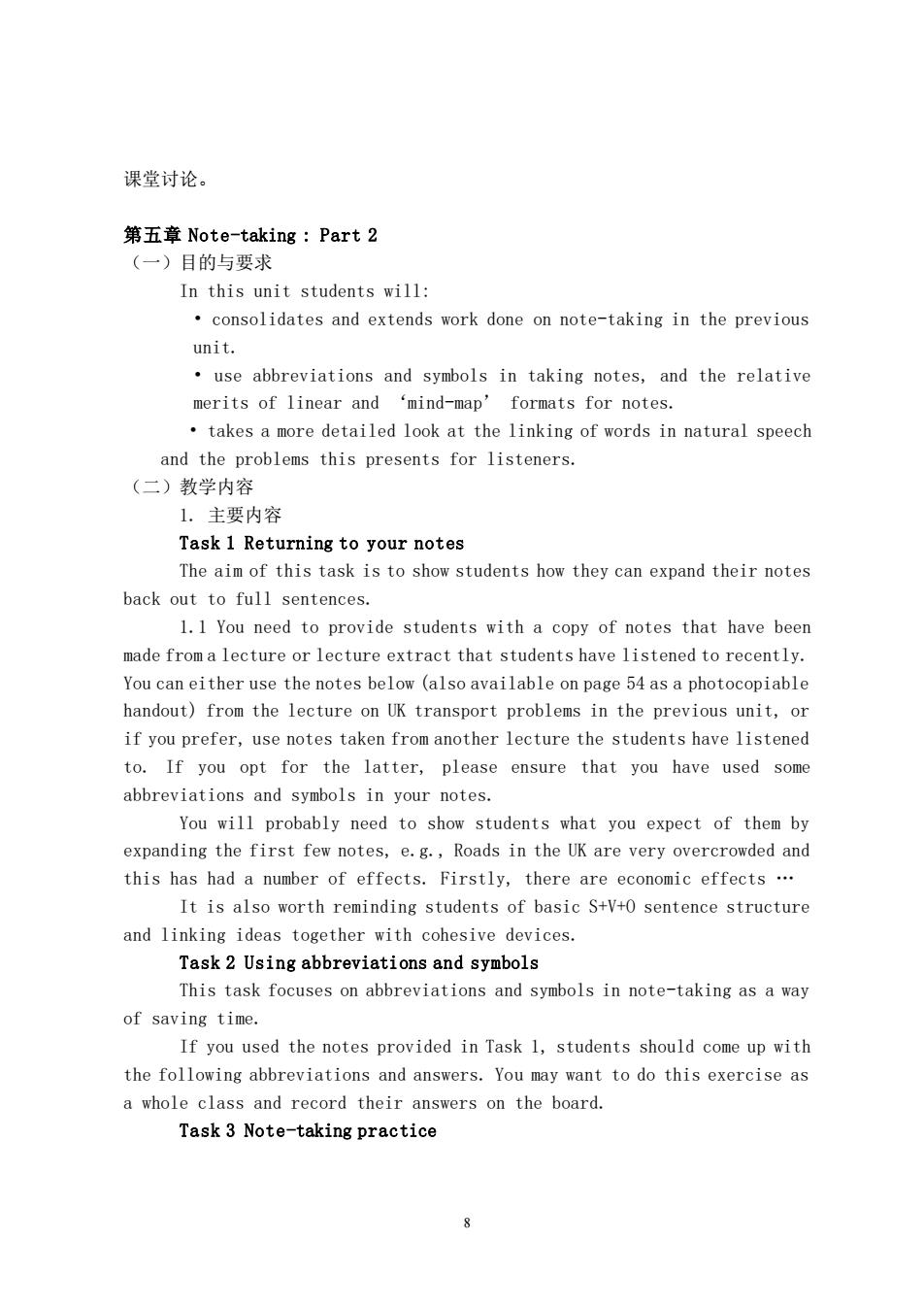正在加载图片...

课堂讨论。 第五章Note-taking:Part2 (一)目的与要求 In this unit students will: consolidates and extends work done on note-taking in the previous unit. use abbreviations and symbols in taking notes,and the relative merits of linear and mind-map'formats for notes. takes a more detailed look at the linking of words in natural speech and the problems this presents for listeners. (二)教学内容 1.主要内容 Task 1 Returning to your notes The aim of this task is to show students how they can expand their notes back out to full sentences. 1.1 You need to provide students with a copy of notes that have been made from a lecture or lecture extract that students have listened to recently. You can either use the notes below(also available on page 54 as a photocopiable handout)from the lecture on UK transport problems in the previous unit,or if you prefer,use notes taken from another lecture the students have listened to.If you opt for the latter,please ensure that you have used some abbreviations and symbols in your notes. You will probably need to show students what you expect of them by expanding the first few notes,e.g.,Roads in the UK are very overcrowded and this has had a number of effects.Firstly.there are economic effects .. It is also worth reminding students of basic S+V+0 sentence structure and linking ideas together with cohesive devices. Task 2 Using abbreviations and symbols This task focuses on abbreviations and symbols in note-taking as a way of saving time. If you used the notes provided in Task 1,students should come up with the following abbreviations and answers.You may want to do this exercise as a whole class and record their answers on the board. Task 3 Note-taking practice8 课堂讨论。 第五章 Note-taking : Part 2 (一)目的与要求 In this unit students will: • consolidates and extends work done on note-taking in the previous unit. • use abbreviations and symbols in taking notes, and the relative merits of linear and ‘mind-map’ formats for notes. • takes a more detailed look at the linking of words in natural speech and the problems this presents for listeners. (二)教学内容 1. 主要内容 Task 1 Returning to your notes The aim of this task is to show students how they can expand their notes back out to full sentences. 1.1 You need to provide students with a copy of notes that have been made from a lecture or lecture extract that students have listened to recently. You can either use the notes below (also available on page 54 as a photocopiable handout) from the lecture on UK transport problems in the previous unit, or if you prefer, use notes taken from another lecture the students have listened to. If you opt for the latter, please ensure that you have used some abbreviations and symbols in your notes. You will probably need to show students what you expect of them by expanding the first few notes, e.g., Roads in the UK are very overcrowded and this has had a number of effects. Firstly, there are economic effects … It is also worth reminding students of basic S+V+O sentence structure and linking ideas together with cohesive devices. Task 2 Using abbreviations and symbols This task focuses on abbreviations and symbols in note-taking as a way of saving time. If you used the notes provided in Task 1, students should come up with the following abbreviations and answers. You may want to do this exercise as a whole class and record their answers on the board. Task 3 Note-taking practice